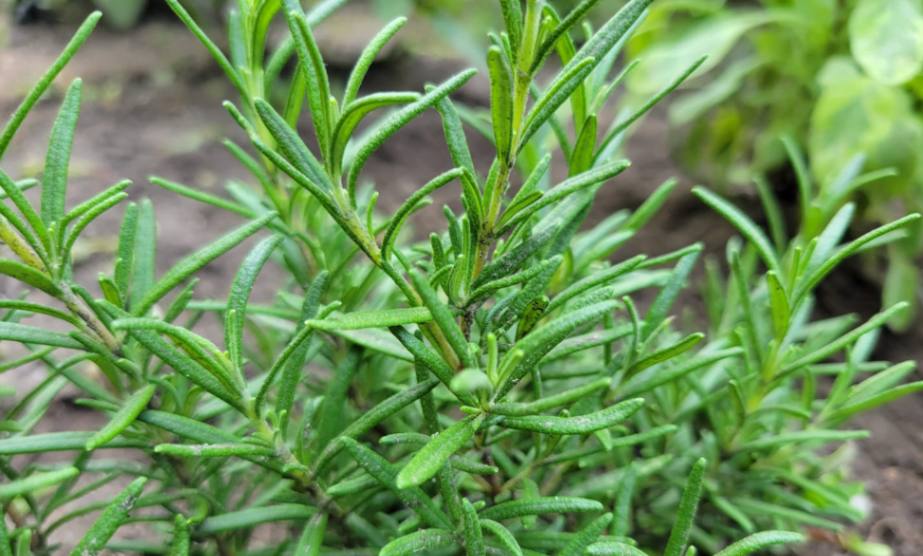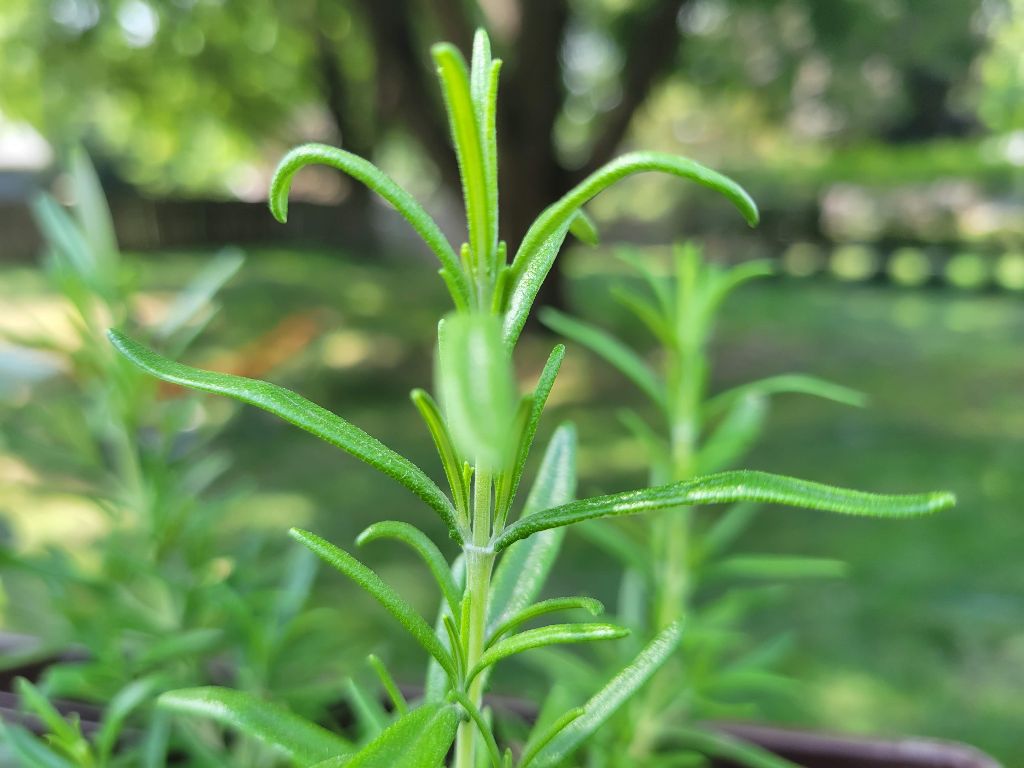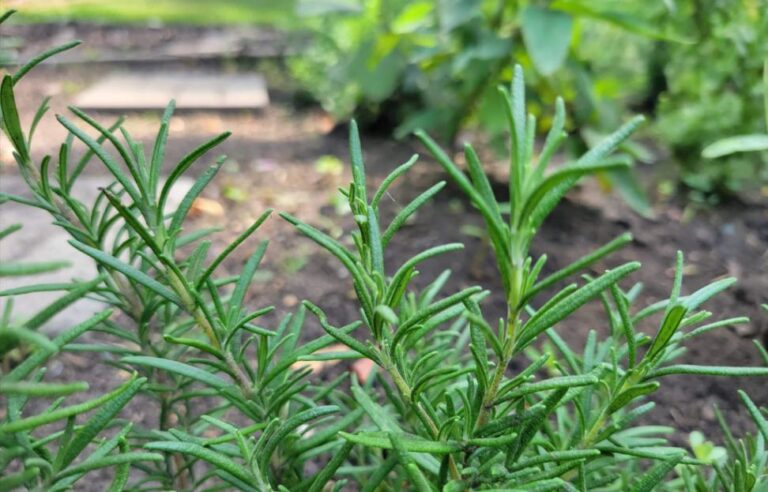This post may contain affiliate links which means I may receive a commission for purchases made through links. I only recommend products that I have personally used. As an Amazon Associate I earn from qualifying purchases. Learn more on my Private Policy page.

Rosemary (Rosmarinus officinalis) is a versatile and aromatic herb that adds a delightful touch to a wide array of culinary creations. From Mediterranean cuisine to grilling and barbecuing, different varieties of rosemary offer unique flavor profiles and growth habits.
With all of the different types of rosemary you can grow, it’s important to know which varieties are best for culinary purposes.
Common Rosemary, Tuscan Blue rosemary, and Barbecue rosemary are some of the more common culinary rosemary varieties grown in home gardens. Cold-tolerant rosemary varieties include Hill Hardy rosemary and Arp rosemary, while common low-growing types include Huntington Carpet rosemary and Prostrate rosemary.
Let’s explore some of the most popular culinary rosemary cultivars that you can grow in your garden.
Table of Contents
See my Complete Guide to Rosemary for a deeper dive into this amazing herb.
1. Common Rosemary
Common rosemary (Rosmarinus officinalis), is an upright shrub with needle-like leaves and small blue flowers. It is widely available, highly versatile in culinary use, and thrives in Mediterranean climates.

Common Rosemary Growing Requirements
Common rosemary is remarkably drought-tolerant. It prefers well-drained soil and full sun exposure and is cold hardy in hardiness zones 7-10. Its adaptability to different environments has contributed to its popularity among gardeners and cooks alike.
Culinary Uses of Common Rosemary
The flavor profile of common rosemary is distinct, characterized by strong pine and lemon-like notes. These flavors add depth and aroma to various dishes, especially those found in Mediterranean cuisine. Roasted meat dishes benefit greatly from the addition of rosemary, enhancing their savory taste. In addition to meat dishes, this rosemary serves as an excellent seasoning for roasted vegetables, soups, stews, and even bread.
Fresh rosemary can be added directly to recipes or used as a garnish for dishes such as roasted potatoes or grilled fish. Dried rosemary works well in spice blends or rubs for marinating meats before cooking.
Purchase common rosemary plants from Amazon
2. Tuscan Blue Rosemary
Tuscan Blue Rosemary (Rosmarinus officinalis ‘Tuscan Blue’) boasts a distinctive upright growth habit and dark green foliage. It can grow up to 6’ tall as a mature shrub when grown as a perennial.
Growing Requirements of Tuscan Blue Rosemary
Tuscan Blue rosemary is renowned for its drought-resistant nature, making it an excellent choice for arid regions. Tuscan Blue rosemary prefers full sun exposure to ensure optimal growth and development and grows well in hardiness zones 8-11. Like all rosemary varieties, Tuscan Blue rosemary prefers loamy, well-drained soil and fairly dry conditions.
One of the most striking features of Tuscan Blue rosemary is its beautiful blue flowers, which appear in abundance from late sprint to mid-summer. These vibrant blue spires add a touch of elegance to any garden or landscape.
Tuscan Blue Rosemary Flavor Profile
Tuscan blue rosemary has a pepper taste with hints of lemon. It can be used to flavor roasts or grilled meats and is commonly used in soups and stews. Tuscan blue rosemary also complements Italian cuisine when used in tomato-based sauces for pasta or pizza. The leaves can be used fresh or dried in culinary applications.
Purchase live Tuscan Blue Rosemary plants from Amazon
3. Hill Hardy Rosemary
Hill Hardy rosemary (Rosmarinus officinalis ‘Hill Hardy’). This particular type of rosemary is renowned for its cold hardiness and adaptability. It has a compact growth habit with narrow, dark green leaves and pale blue flowers that bloom during early summer.

Hill Hardy rosemary prefers well-drained, sandy to loamy soil. It thrives in full sun and prefers drier conditions. Like all rosemary types, it is fairly drought-tolerant and prefers drier conditions.
Hill Hardy Rosemary’s Cold Tolerance
One of the key characteristics of Hill Hardy rosemary is its cold-hardiness. Hill Hardy rosemary can withstand colder temperatures compared to other varieties of rosemary, thriving in hardiness zones 6-10. This resilience makes it an excellent option for gardeners who live in regions with harsh winters or unpredictable climates.
Flavor Profile and Culinary Uses of Hill Hardy Rosemary
Hill Hardy rosemary has a flavor profile that shares similarities with common rosemary, but it has a taste that is milder and less pungent. This subtle flavor makes it an ideal addition to a variety of culinary applications.
Its mild taste pairs well with roasted meats without overpowering the dish’s flavors. It also works wonderfully in marinades, infusing them with a hint of freshness and depth. This versatile herb can enhance the flavors of soups and stews when added during the cooking process.
4. Arp Rosemary
Arp rosemary (Rosmarinus officinalis ‘Arp’) stands out for its upright and sturdy growth habit, adorned with silvery-green foliage and delicate pale blue flowers.

Cold Hardiness of Arp Rosemary
Similar to Hill Hardy rosemary, Arp rosemary is known for its exceptional cold-hardiness, thriving in hardiness zones 6 to 10. Unlike other varieties that may struggle in frosty conditions, Arp Rosemary remains resilient, even in the face of freezing temperatures. Its ability to withstand harsh winters sets it apart from many other types of rosemary.
Flavor Profile of Arp Rosemary
Arp Rosemary delivers a robust taste with a subtle hint of citrus. This distinctive profile adds depth and complexity to various dishes. Arp rosemary can be used when seasoning poultry, lamb, or potatoes due to its aromatic qualities that enhance the overall taste experience.
Purchase live Arp Rosemary plants from Amazon
5. Barbecue Rosemary
Barbecue rosemary (Rosmarinus officinalis ‘Barbecue’) is a compact and upright variety of rosemary that features aromatic, dark green leaves cultivated specifically for its intense taste that is well suited for outdoor grilling and smoking.

Barbecue rosemary thrives in dry conditions and prefers well-drained loamy to sandy soil. It is a drought-tolerant herb that prefers full sun exposure. BBQ rosemary is hardy in zones 7-10, so it is not well suited for growing as a perennial in colder climates.
BBQ Rosemary Flavor Profile & Culinary Applications
The flavor of barbecue rosemary can be described as woody with hints of pepper and lemon. Its robust taste makes it an ideal herb for grilling and barbecuing.
When using barbecue rosemary in your culinary creations, consider experimenting with different cooking techniques to fully explore its potential:
- Sprinkle chopped barbecue rosemary over hot coals while grilling for an instant burst of smoky fragrance.
- Create flavorful marinades by combining minced garlic, olive oil, lemon juice, and finely chopped barbecue rosemary.
- Use whole sprigs of barbecue rosemary as skewers for kebabs to infuse them with a smoky aroma.
Purchase live Barbeque Rosemary plants from Amazon
6. Huntington Carpet Rosemary
Huntington Carpet rosemary (Rosmarinus officinalis ‘Huntington Carpet’) is a low-growing and spreading variety of rosemary. It is characterized by having small small, dark green leaves and vibrant blue flowers.
Huntington Carpet rosemary has fairly low maintenance requirements. It thrives in well-drained soil and has low watering needs. It is best suited for hardiness zones 7-10 but doesn’t perform well in colder climates.
Huntington Carpet rosemary has an intense aroma with a distinct piney taste. This unique flavor profile makes it a popular choice for culinary purposes such as flavoring oils, adding to bread, or even for us in savory pastries, as it introduces a delightful herbal note that complements various fillings like cheese, mushrooms, or spinach.
Purchase live Huntington Carpet Rosemary plants from Amazon
7. Prostrate Rosemary
Prostrate rosemary (Rosmarinus officinalis ‘Prostratus’) is a captivating shrub with a unique creeping and trailing habit. Similar to Huntington Carpet rosemary, it is low-growing and has a creeping and trailing habit. Its cascading growth habit makes it ideal for draping over walls or container edges, creating visually pleasing displays
Prostrate rosemary is well-suited for regions within hardiness zones 7-10, where it can withstand long periods without water. Like other sage varieties, prostrate rosemary prefers full sun and well-drained sandy to loamy soils.
Once established, prostrate rosemary requires minimal maintenance. Regular pruning helps maintain its shape and encourages dense growth.
Prostrate rosemary shares similarities with common rosemary, but its taste is milder and less intense. While common rosemary can be used liberally in cooking, prostrate rosemary is best utilized as a garnish or in herb-infused vinegar to add a subtle hint of flavor.
Purchase live Prostrate Rosemary plants from Amazon
Best Cold Hardy Rosemary Varieties
Cold temperatures can be challenging for rosemary, but there are specific rosemary varieties that have proven to thrive in harsh winter conditions. By choosing cold-hardy varieties and implementing protective measures, you can enjoy the beauty and aroma of rosemary in areas with colder climates.

Selecting Cold-Hardy Varieties Based on USDA Hardiness Zones
The USDA developed a hardiness zone map that divides the US into different zones based on average minimum winter temperatures. This map serves as a useful tool when selecting cold-hardy rosemary varieties suitable for your region.
The best cold hardy types of rosemary include:
- Arp Rosemary (Amazon): Known for its exceptional cold tolerance, Arp rosemary can withstand temperatures as low as 5°F (-15°C).
- Hill Hardy Rosemary: Another excellent choice for colder climates, Hill Hardy rosemary is known to survive temperatures down to 0°F (-18°C).
Protecting Rosemary During Harsh Winters
Protecting rosemary during harsh winters is important for their survival, even with cold-hardy varieties. Mulching and covering can help protect rosemary plants from freezing temperatures..
- Mulching: Apply a layer of organic mulch around the base of the plant before winter sets in. This will help retain soil moisture and regulate temperature fluctuations.
- Covering: Use frost blankets or burlap to cover your rosemary plants during extreme cold spells. This will shield them from harsh winds and provide additional protection against freezing temperatures.
If you live in an area with extremely cold winters, growing rosemary indoors may be the only viable option if you wish to harvest rosemary year-round. The extremely harsh winters where I live here in Minnesota, unfortunately, don’t allow me to grow rosemary as a perennial.
Conclusion
In the world of culinary herbs, rosemary stands out for its diverse range of flavors and growth habits. From common rosemary’s bold and piney notes to the delicate taste of prostrate rosemary, each variety offers something unique to elevate dishes to new heights. Furthermore, cold-hardy types like Arp and Hill Hardy rosemary allow gardeners in cooler climates to savor the herb’s delights even during winter.
Regardless of the rosemary variety you choose, understanding their growing requirements and flavor profiles empowers you to create inspired dishes in your kitchen. Whether used to season roasted meats, flavor oils, or enhance the taste of soups and stews, rosemary remains a cherished and essential herb in culinary traditions worldwide.
Frequently Asked Questions (FAQs)
What is the best type of rosemary for cooking?
While many types of rosemary can be used in cooking, varieties with larger leaves tend to have a more pronounced flavor. Some of the culinary rosemary varieties include common rosemary, Tuscan Blue rosemary, Barbecue rosemary, Arp rosemary, and Hill Hardy rosemary.
What is the most cold-tolerant rosemary?
Arp rosemary and Hill Hardy rosemary are some of the most cold hardy culinary rosemary varieties available for home gardening. They are both cold tolerant in USDA hardiness zones 6-10. Arp rosemary can survive temperatures as low as 5°F (-15°C) while Hill Hardy rosemary can withstand temperatures down to 0°F (-18°C).
What grows well with different types of rosemary?
Herbs such as sage, thyme, oregano, and lavender are all great rosemary garden companions, as they have similar cultivation needs. All of these herbs prefer well-drained soil and full sun exposure.
Last Updated on 27 April 2024 by Bob Lee

